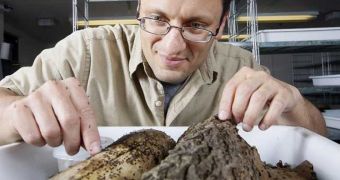There are several tales circulating around about how kids from small towns make it big in metropolises, through honesty, hard work and dedication. A new study shows that this may also be true for a particular ant species as well. Colonies of the odorous house ant (Tapinoma sessile) develop unexpectedly when placed in urban environments, which are roomier than their usual habitat. They generally build their colonies in some of the tightest places in the deep forest, and so researchers did not expect to see its colonies growing so massive, LiveScience reports.
A group of scientists has determined that these ants, when given proper conditions, develop to such extents that it almost becomes unbelievable. When moved to the lab, their numbers exploded, until experts had a colony of 6 million members and more than 50,000 queens on their hands. The super-colonies that appeared were several thousand times larger than any of the ones investigators found in the ants' natural habitats. In the “wild,” these ants live mostly in hollow acorn and hickory nut shells and are rather inconspicuous, the experts say.
“They use walls and buildings almost like giant incubators where they can raise large broods. These insects are now considered one of the most common, dominant house ant pests. In the forest, they have to compete for food and nesting sites. In the cities, they don't have that competition. People give them a place to nest, a place to eat,” says Purdue University urban entomologist Grzegorz Buczkowski, who has been studying these creatures for quite some time. He says that, generally, ants such as these live in colonies of about 500 workers, with only one queen to produce additional members.
“In the forest, these ants not only compete with other species of ants, but with members of their own species – workers from different colonies are very aggressive toward each other. We don't really know yet how they get from single-queen colonies to multiple-queen colonies. We want to take ants both from the forest to the city and from the city to the forest to learn more about their behavior,” the expert adds, in a paper detailing the findings that appears in the early online edition of the scientific journal Biological Invasions.

 14 DAY TRIAL //
14 DAY TRIAL //